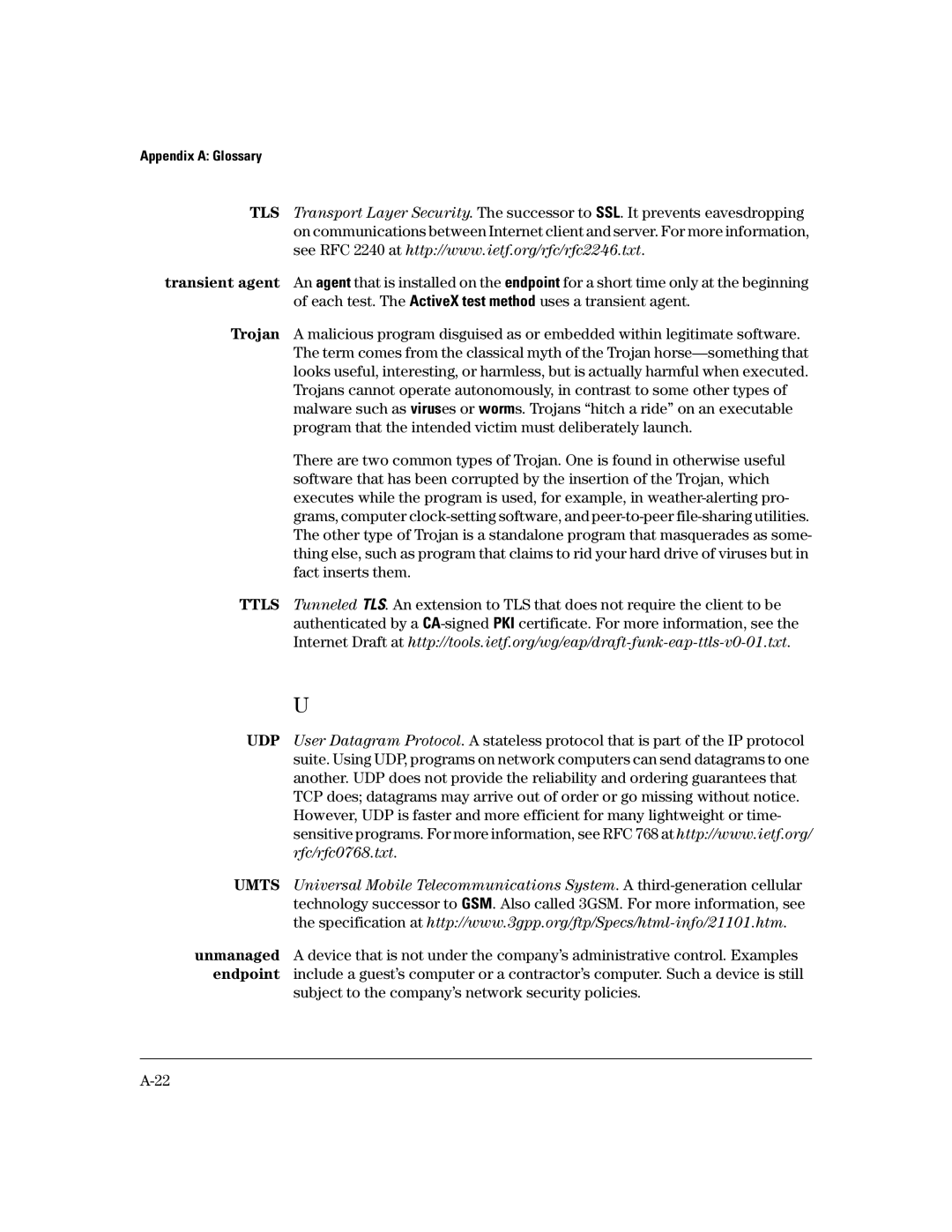Appendix A: Glossary
TLS Transport Layer Security. The successor to SSL. It prevents eavesdropping on communications between Internet client and server. For more information, see RFC 2240 at http://www.ietf.org/rfc/rfc2246.txt.
transient agent An agent that is installed on the endpoint for a short time only at the beginning of each test. The ActiveX test method uses a transient agent.
Trojan A malicious program disguised as or embedded within legitimate software. The term comes from the classical myth of the Trojan
There are two common types of Trojan. One is found in otherwise useful software that has been corrupted by the insertion of the Trojan, which executes while the program is used, for example, in
TTLS Tunneled TLS. An extension to TLS that does not require the client to be authenticated by a
U
UDP User Datagram Protocol. A stateless protocol that is part of the IP protocol suite. Using UDP, programs on network computers can send datagrams to one another. UDP does not provide the reliability and ordering guarantees that TCP does; datagrams may arrive out of order or go missing without notice. However, UDP is faster and more efficient for many lightweight or time- sensitive programs. For more information, see RFC 768 at http://www.ietf.org/ rfc/rfc0768.txt.
UMTS Universal Mobile Telecommunications System. A
unmanaged A device that is not under the company’s administrative control. Examples endpoint include a guest’s computer or a contractor’s computer. Such a device is still
subject to the company’s network security policies.
